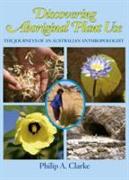- Start
- Discovering Aboriginal Plant Use
Discovering Aboriginal Plant Use
Angebote / Angebote:
The career of a museum-based anthropologist is diverse, involving the curation of artefact collections, organising exhibits, answering inquiries, and conducting fieldwork. Philip A Clarke started work at the South Australian Museum over 30 years ago, and, during that time, his role changed from museum assistant, to collection manager, registrar, curator, and head of anthropology. There are many ways to explore a culture other than your own, and Clarke chose ethnobotany as the 'window' through which to gain insights into Aboriginal Australia. Ethnobotany is a diverse field that is concerned with investigating the relationships between human cultures and the flora. In the past, it was mainly used by scholars who studied the societies of hunter-gatherers and non-Western horticulturalists. Today, it is increasingly being used to document aspects of the lives of Indigenous peoples in a postcolonial world. Clarke argues that we can understand a people better if we know how they see and use plants. In this book, Clarke dips into his field journals to provide a rich account of journeys -- as both an anthropologist and an ethnobotanist -- that span the temperate, arid, and tropical zones of Australia and neighbouring landmasses. Clarke describes the cultural and natural heritage of each region, examining the distinctiveness of the plant life used by Australia's Aboriginal people.
Folgt in ca. 15 Arbeitstagen
